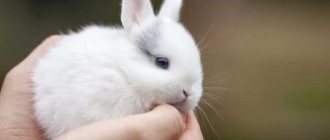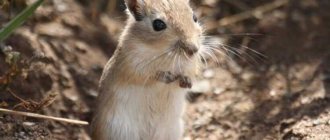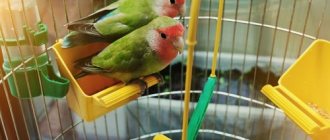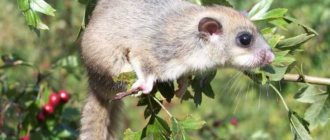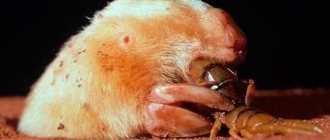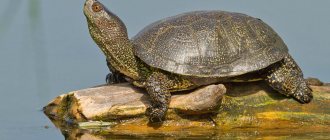Turtles are a large order belonging to the class of reptiles. The biological classification identifies more than 300 animal species, forming 14 families. An analysis of the fossil remains of the ancestors of modern turtles showed that the first representatives of the order appeared about 200 million years ago. During the existence of reptiles, their appearance has changed little, but the numbers of some species have reached critical levels in recent centuries. Currently, 228 species of turtles are listed in the International Red Book, half of them have the status of “endangered species”. The main factors influencing the population size include the capture of animals for food and jewelry, changing habitats and environmental pollution, and death as a result of an increase in the number of natural enemies.
Characteristics and description
Depending on their habitat, all turtles are divided into two large groups:
- marine;
- ground.
Land-dwelling species are also divided into land and river species.
Regardless of their lifestyle, all reptiles breathe oxygen. The respiratory organs of a sea turtle are the same as those of a land turtle. Since the ribs of animals are fixed in one position, the decrease and increase in lung volume occurs due to the muscles pulling the internal organs and then returning them back. At the same time, such a volume of oxygen can enter the lungs, which is enough for the animal to stay under water for several hours or even days. After this, the turtle rises to the surface for another breath.
Reptiles have a three-chambered heart, the spinal cord is very well developed, but the brain is not very large: it weighs only 1/1000 of the total mass of the animal.
Turtles lead a solitary lifestyle and are distinguished by a rather aggressive character, this behavior is especially evident in relationships with relatives.
What does it look like
The main external feature that distinguishes turtles from other reptiles is the presence of a shell. It consists of two parts: a convex carapace covering the back, and a flatter plastron located under the abdomen. In addition, the appearance of turtles has several more features:
- the head is slightly elongated and flattened on top, the eyes are located on the sides; in marine reptiles they are located in the upper part of the head;
- the animal has thick forelimbs and flatter hind limbs; in land turtles, the surface of the front paws is protected by dense scales; the paws of marine reptiles have transformed into flippers;
- Reptiles have a small tail; water-dwelling individuals use it for maneuvers.
Shell structure
In appearance, the shell looks like one continuous horny shield. In fact, it has a complex structure and is formed from 50 different bones by stretching and fusion of the ribs and vertebrae of the skeleton. If you look at the remains of fossil animals, you will see that the carapace on the inside resembles a rib cage located outside the body.
Many cartoons show how a turtle can freely leave its shell and return to it. This creates a false perception of the significance of the carapace and plastron for the reptile. In fact, these are parts of the turtle's skeleton, and without its shell it simply cannot survive. In addition, the horny plates have nerve endings and blood vessels, so damage to them causes pain to reptiles and can cause bleeding.
Most land turtles retract their heads by bending their necks into an S shape. Some species lay their necks sideways, pressing their heads against one of their forelimbs. Depending on this, secret-necked and side-necked turtles are distinguished.
Atlantic Ridley
This species is considered the smallest among sea turtles, as well as the fastest growing. An adult turtle can grow up to 77 cm and weigh up to 45 kg. They have a gray and green carapace, shaped like a heart, but the young are usually gray-black. Females are larger than males.
The Atlantic ridley has chosen the Gulf of Mexico and Florida as its habitat. Prefers shallow water. They feed on small marine animals, but if necessary they will easily switch to plants and algae.
Types of turtles with photos and names
Let's take a closer look at several families and varieties of marine and land reptiles.
American freshwater
A family of freshwater turtles, comprising more than 50 species. Medium-sized animals are found in South America and the south of the North American continent. Some species, such as the bog turtle, are widespread in Europe and Asia.
One of the smallest reptiles of the family is the spotted turtle: the length of its shell rarely exceeds 12 cm.
Red-eared
The most common inhabitant of home terrariums and aquariums. You can distinguish a red-eared slider by two red or yellow spots near the ears. Due to the different colors of the spots, there is also a second name - yellow-eared turtle. The shell and body are bright green with yellow and dark green stripes.
The reptile is a good diver and swimmer: the maximum speed of the red-eared turtle in water reaches 30 km/h.
Red-footed
Also known as the coal turtle. Lives in Central and South America. The shell of the cubs is light yellow in color; with age, it acquires a dark gray tint. The carapace is oval, slightly narrowed in the middle part. The forelimbs of the red-footed turtle are covered with many bright red and yellow spots.
Soft-bodied
The group includes several families, a characteristic feature of which is the absence of a hard horny shell. The upper part of the back of such reptiles is covered with a soft, leathery shell with a cartilaginous border. You can also recognize them by their elongated, nosed head. The most famous representatives of the group are the Trionics soft-bodied turtle, the narrow-headed turtle, and the Indian lobed turtle.
Leathery
It is the only species from the leatherback turtle family that has survived to this day. Characteristic features include the large size of the individuals (these are the largest reptiles of the entire order) and the structure of the shell, which is not connected to the skeleton and consists of small hard plates covered with skin.
Central Asian
Also known as the steppe tortoise. It has a noticeably convex shell of a sandy-brown color with dark spots in the centers of the horny scutes. The reptile continues to grow throughout its life. This is one of the most popular types for home keeping.
Just like the Mediterranean (Greek) tortoise, it belongs to land reptiles.
Bighead
You can recognize the reptile among other turtles by its long tail, as well as by the shape and size of its head: it widens significantly from the beak to the neck, and its length is equal to half the length of the carapace. Due to this body structure, the big-headed turtle is not able to hide in its shell.
Caspian
Lives in southern Europe. The shell is medium-sized and colored brown-green. The Caspian turtle is one of the few representatives of the order that can live in both fresh and salt water.
Keeping sea turtles in captivity
Absolutely all representatives of different species of sea turtles must be kept exclusively in high-quality sea water and always in large pools. After all, large adult animals require a lot of free space to swim. The best option for swimming are pools without sharp corners. With water temperatures from 22 to 26 C.
These marine animals have a very intense metabolism. Therefore, very good water filtration is vital for them. Human waste and various food waste must be regularly removed from the bottom of the pool.
Most sea turtles, especially at an early age, prefer food of animal origin. Therefore, in order to prevent water pollution, it is not recommended to feed animals with fish such as cod (due to its very soft meat) and herring (due to its high fat content).
With age, the gastronomic interests of turtles change, and they begin to give greater preference to plant foods. Therefore, when keeping sea turtles in captivity, they can be given not only algae, but also spinach. But it’s better not to offer them lettuce leaves, because... they quickly pollute the water.
Dimensions
The length of the shell and the weight of representatives of the order of turtles can vary greatly:
| Variety name | Shell length, cm | Weight, kg |
| Dermochelis | 250 | 600 |
| Sea green (soup) | 150 | 200 |
| Panther | 70 | 50 |
| Olive turtle | 60 | 45 |
| Cayman | 35 | 7 |
| Amazonian shieldfoot | 30 | 4 |
| Tuberous | 20 | 3 |
| Egyptian | 10 | 0,3 |
Tuberous
Its other name is terrapin . This is a species of freshwater turtle that lives in the salt marshes of the United States, in the coastal area. The lump turtle is gray, but can also have brown, white or yellow skin, covered with a gray or brown shell. Its diameter is 19 cm in the female and 13 cm in the male, but larger specimens are also occasionally found.
Body length is from 18 to 22 cm in females, and 13-14 cm in males. They weigh about 250-350 g. These turtles eat crabs, shellfish, small fish, and occasionally indulge in marsh vegetation.
They themselves suffer from attacks by raccoons, skunks and even crows. Local residents also love their meat, so this species is bred on farms. They were once the main food of European settlers, and in the 19th century they became a delicacy. In nature they can live up to 40 years.
What do they eat?
Land turtles are primarily vegetarians. They eat grass, fruits of bushes and trees, mushrooms and other plant foods. Aquatic reptiles are predators. The basis of their diet is small fish, amphibians, crayfish and mollusks.
This point is very important when keeping a turtle as a pet. Before decorative turtles settle in a terrarium or aquaterrarium, it is necessary to find out what a particular species eats in nature and adhere to the diet that is optimal for the pet.
Economic importance
Not too large land and aquatic turtles are popular pets that are highly valued by exotic lovers . Turtle meat is widely used for food purposes and is consumed raw, boiled or fried, and the unpretentiousness of such animals makes it easier to transport live reptiles as “live canned food.” The animal's shell is used in the manufacture of such traditional women's hair ornaments as kanzashi.
Most American states allow, but discourage, pets such as turtles, but Oregon does not allow such pets. It should also be noted that federal law in America completely prohibits the trade or transportation of turtles whose size is less than 100 mm, and in the western part of the country turtle racing, which is an original fair entertainment, is very popular.
Unlike many other well-known and studied reptiles, any turtle poses virtually no real threat to human life and health. The exception is represented by male leatherback turtles, who, with the onset of mating season, are able to grab swimmers with flippers or drown them, and biting and aggressive snapping turtles can inflict a serious bite on a person.
Video
How do they reproduce?
The age of puberty depends on the size of the individuals. The smallest reptiles are ready to reproduce at 2 years of age; giant reptiles mature at 10-12 years and later. Regardless of the species and habitat conditions, turtle reproduction has several common features:
- during the mating season, skirmishes occur between males, during which rivals try to turn each other over or bite each other with a strong beak;
- before mating, males court females by stroking them with their forelimbs and making primitive sounds;
- all turtles are oviparous animals, the formation of eggs after fertilization occurs within 2-3 months, some females are able to retain the sex cells of the male in the body and make several repeated clutches per season;
- females choose places for laying so that the eggs warm up under the sun's rays; they dig holes for laying eggs themselves or use crocodile ones;
- The sex of the cubs is determined during the developmental stage and depends on temperature.
All turtles, with the exception of a few species, do not return to them after laying eggs and do not take part in protecting and raising their offspring. Turtles are born after 2-3 months; in larger species, the incubation process lasts up to six months. The hatched babies crawl towards the water. Many of them die, becoming food for birds of prey and animals.
Painted
Its other name is decorated turtle . It received this name because of its attractive colors. The painted turtle is the most common species in North America, where they can be found in freshwater bodies.
The length of an adult female is from 10 to 25 cm, males are slightly smaller. She has black or olive skin and has orange, yellow and red stripes on her limbs. There are several subspecies of the painted turtle. In the early 1990s, this species was the second most popular turtle kept in the home.
Their numbers could be reduced, because... Their habitat is being destroyed, many die on highways, but due to the fact that turtles easily get along with people, it has helped them maintain their numbers.
They feed on insects, fish, and crustaceans. Thanks to their strong shell, they have almost no enemies, except raccoons and alligators. But the eggs of these turtles are often eaten by snakes, rodents and dogs. In winter, painted turtles sleep by burying themselves in the mud at the bottom of reservoirs.
Does a turtle have teeth
The oral cavity of turtles of all varieties is structured almost the same: biting and grinding food is carried out with the help of rhamphothecae. These are reduced teeth that have taken the form of horny sheaths covering the edges of the jaws. On the surface of the rhamphothecae there are irregularities and roughness, which crush solid food. Thanks to the horny plates, the turtle's mouth resembles a beak. This structure of the oral cavity is also characteristic of some other orders of reptiles.
JELLYFISH
musky
It belongs to the species of mud turtles. She has an oval carapace with 3 longitudinal wavy ridges. the musk turtle because it has special glands. In moments of danger, it begins to emit an unpleasant odor.
Americans often call them stinkers, and try to handle them carefully, because... This scent is persistent and can last for several hours when absorbed into clothing. They are found naturally in North America, in freshwater bodies of water with slow currents. They grow up to 10-15 cm.
In winter they hibernate, in summer they like to bask in the sun, climbing on snags and trees that have fallen into the water. They hunt at dusk or at night.
Interesting facts about turtles
- The smallest turtle in the world is the Cape flat turtle. It lives in the south of the African continent. The length of the shell of adult individuals does not exceed 9-10 cm. The average weight of the animal is 240 grams.
- The speed of movement of a reptile largely depends on the weight and temperature of the environment. The slowest are giant turtles, covering no more than 4 km per hour, and the fastest are sea turtles, capable of swimming at speeds of up to 35 km/h.
- The rarest turtle in the world is the Fernandina turtle. In 2022, an adult female belonging to this species of giant tortoise was discovered on one of the Galapagos Islands. Previously, Fernandina turtles were considered extinct.
- Turtles live the longest of all vertebrates. There is a large number of documented facts that many of these reptiles lived to be 100-150 years or more. The oldest turtle in the world is Jonathan, who lives on St. Helena Island. In 2022, the reptile turns 187 years old.
- The Madagascar radiated tortoise is recognized as the most beautiful representative of the order. You can recognize it by the yellow color of its body and the unusual coloring of its carapace: numerous light stripes extend from the center to the edges of each scute.
Believe in yourself
Compatibility
Turtles do not need neighbors, they do not suffer from loneliness. If you really want to get yourself several turtles, then Mediterranean and Central Asian turtles support cohabitation. Forest, steppe and desert will be at enmity. Representatives of other species should not be placed with pets, as they can be carriers of various diseases.
Frogs, snakes, toads, crocodiles, lizards, snails, and newts should not be kept together with reptiles. Turtles are not compatible with chameleons and mollusks. The fact is that all animals have different requirements for humidity and temperature. Each species requires a specific type of terrarium and soil.
Main enemies
But the number of turtles was also affected by deliberate actions of people against these harmless animals. In Turkmenistan, there is a belief among a certain part of the population that the turtle is the filthiest animal. This belief was previously accompanied by a ban on touching the turtle. Today it is combined with the aggressiveness of teenagers who destroy these slow creatures. In Uzbekistan, the origin of the turtle is linked in legend to a rogue merchant. He so shamelessly weighed down the buyers that they became indignant and cried out to Allah. Allah got angry, took two pans of the scales on which the merchant was underweighting the flour, and squeezed the swindler with them. “You will forever bear these evidences of your shame,” Allah concluded. Between the scales the merchant had only his head and limbs left sticking out, and he turned into a turtle. It must be assumed that such a legend did little to promote people’s caring attitude toward turtles. Also, a large number of turtles die from the feet of artiodactyl animals and birds of prey.
Nutrition.
Turtles in general can be called omnivores, although some species prefer plant food, others animal food, and still others eat everything. A strictly specialized diet is rare. Some aquatic turtles only feed underwater. Very young individuals require daily feeding, but this is not necessary for adults. In fact, once well fed, they can go months, and possibly years, without food.
Turtles have no teeth, and the sharp edges of their jaws are capable of biting food, but not chewing it. Tough, fibrous plants are difficult for turtles to handle, and animal meat sometimes has to be torn into pieces using the claws on the front paws. Some species have horny ridges inside the mouth, which allow them to crush prey protected by hard coverings.
The main mistakes in caring for land turtles
Follow the rules of care and then your pet will delight you with its good mood and health
People often buy turtles without thinking about the care they require. The most common mistakes in keeping reptiles:
- Lack of a terrarium as such. Unfortunately, most people buy reptiles, forgetting about the arrangement of their habitat. They let them crawl around the house, without providing any temperature control or other comfortable living conditions for the pet.
- No UV lamp. Not all owners are aware of the extreme necessity of ultraviolet radiation for the health of their pet. If there is no such lamp, problems arise with the baby’s shell and health.
- Cleaning your pet with a stiff brush when shedding. Bathing should not be accompanied by any additional cleaning products or brushes. After bathing, wipe dry with a soft towel.
- Keeping several pets in one terrarium. Doing this is strictly prohibited. Two males in the same area or animals of different sizes will definitely start a war for territory.
- Washing the terrarium in the sink with kitchen utensils. It’s best to do all the cleaning outside of the kitchen. The use of a kitchen sponge is also undesirable for hygienic purposes. It is better to prepare a separate set of rags and sponges for cleaning the animal’s home, and after this procedure, thoroughly disinfect the sink.
Wash your hands thoroughly with soap!
The turtle is a wonderful, unpretentious pet. With proper care and feeding, he will delight his owners for many years. Many people love to watch their pet bask in the sun and take it with them to the dacha for a walk on the grass. And for some, arranging a reptile’s place of residence turns into a real hobby. If you don’t want to waste time on walks and constant fussing with the animal, a turtle is the best choice to purchase.
What is the price?
Prices for a red-eared turtle range from 100 to 2500 rubles.
If you are a beginner, you may not be able to cope with several turtles at first, so you should first buy one pet, and after a while another one.
During the warm season, the purchased animal can be carried home in a plastic container or box with sawdust. If it's cold outside, it is recommended to put a heating pad in the box. You can also wrap your pet in a cloth and hide it under a jacket.
Where does it live?
The red-eared slider's historical range includes a wide area from the southern United States to northern Colombia and Venezuela. Reptiles prefer shallow lakes, small ponds without steep banks. Turtles lead a sedentary lifestyle: they either leisurely look for their next prey, swimming in a pond, or, having had their fill, crawl ashore and bask in the sun. If danger is detected, turtles suddenly take off and dive into the water.
The high endurance of red-eared turtles led to the fact that they were artificially introduced to the countries of Europe, Southeast Asia, Japan, China, and South Africa. In Australia, reptiles are officially recognized as pests, since they successfully compete with the local endemic reptofauna and displace them from their usual habitats. Unfortunately, red-eared turtles can increasingly be found in urban ponds in our country; most of them were released by their owners.
Lifespan.
No known vertebrate lives as long as turtles. Most of the information suggesting that their lifespan is slightly more than 50 years refers to individuals kept in captivity. Some species certainly live much longer. The Carolina box turtle (Terrapene carolina) found in Rhode Island was almost certainly 130 years old. The maximum period is considered to be approx. 150 years, but it is quite possible that the actual life expectancy of individual individuals is much longer.
